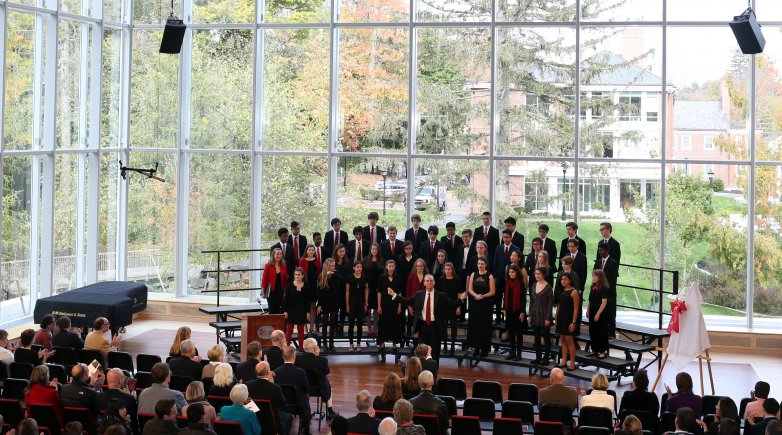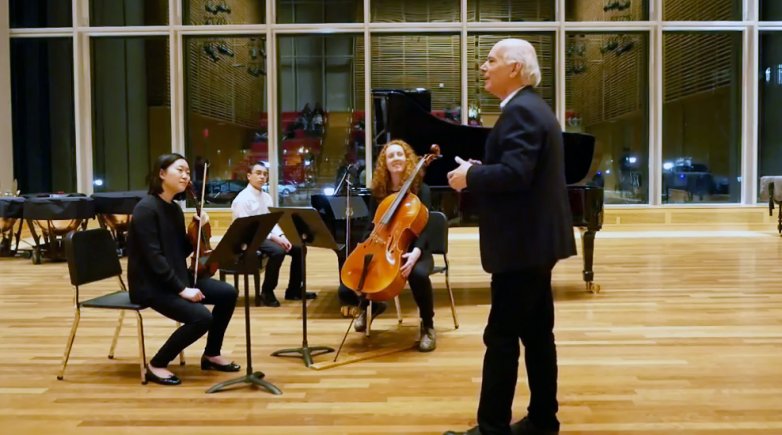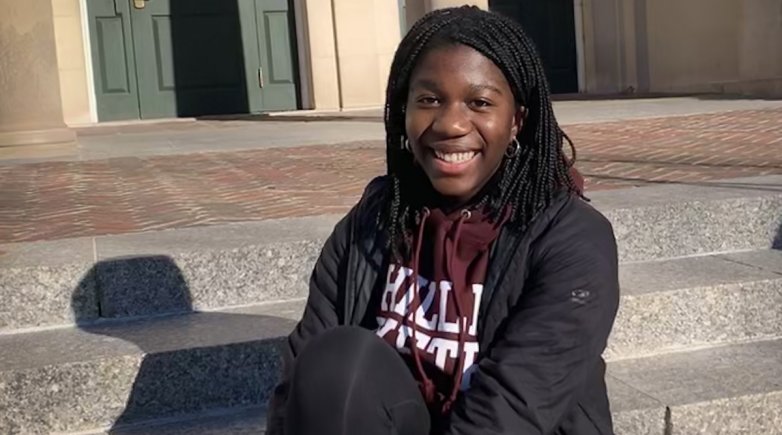Peak performance
The Class of 1959 Music Center Addition makes an impact in its first year.
A centerpiece of the music building addition, “The Bowld” provides concertgoers and performers alike with a vibrant space to enjoy.
Classmates Dudley Rauch ’59 and Leonard Egan ’59 are reminiscing over the phone lines from their respective homes in Southern California and Washington, D.C. Fond memories of student exploits are interspersed with the history of their class’s recent generous gift to the Academy, which helped make possible the construction of the Class of 1959 Music Center Addition. Opened to rave reviews in the fall of 2016, the facility is doing exactly what Rauch, Egan and their classmates hoped — attracting students to Exeter’s many music classes, groups and programs and making possible world-class performances.
The seed for a class fundraising project in support of the arts was officially planted in the summer of 2012, when Rauch and his then wife-to-be, Michele, visited campus. But his own passion for music emerged decades earlier. “When I arrived at Exeter in the summer of 1955, I had a subscription to the Columbia Record Club on the classical side,” Rauch recalls, “and it was at the Academy that I really started studying classical music. Since then music, and particularly classical music, have always been a big part of my life.”
Rauch’s passion would eventually lead him to become a benefactor of the Los Angeles Philharmonic (he remains a member of the board of directors) and of LA’s Walt Disney Concert Hall. Beginning with his 40th Exeter reunion in 1999, he has also become increasingly involved with fundraising for the Academy, further fortifying the class of 1959’s robust legacy of generosity.




